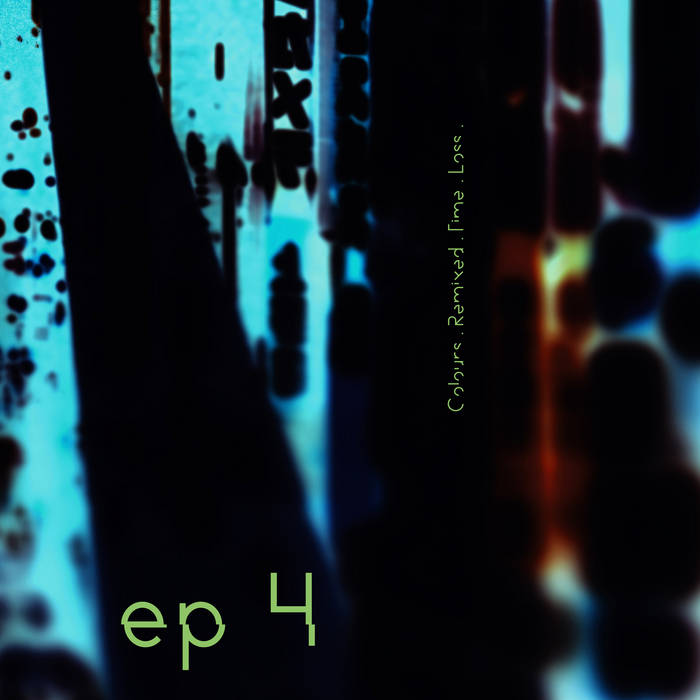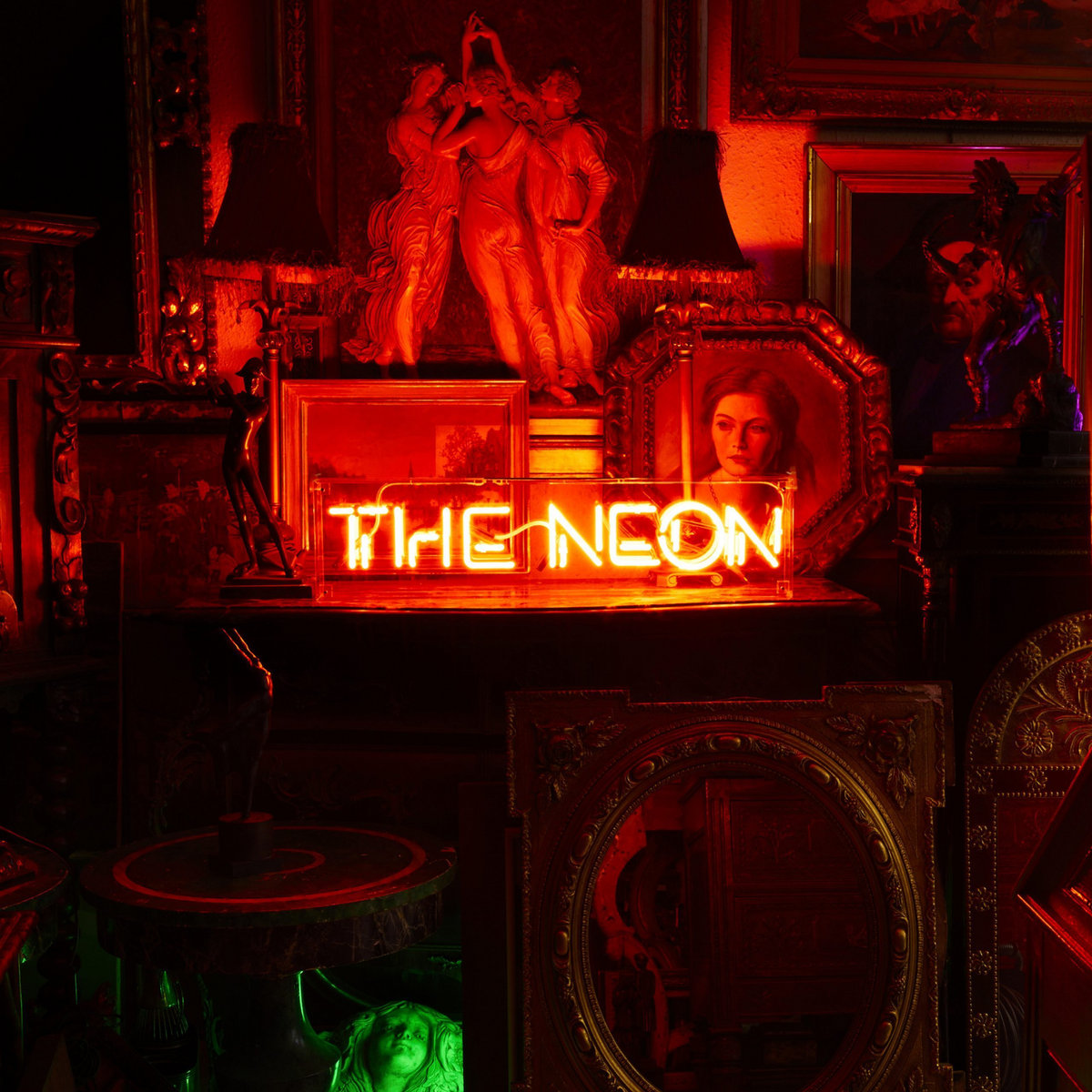
Maps "Colors. Remixed. Time. Loss. (Mute)"
The fourth remix album.
From Mute:
The series, which will unfolded throughout the summer, reworks and reimagines tracks from Chapman’s latest album, Colours. Reflect. Time. Loss. (2019, Mute). The acclaimed album, his most ambitious to date, saw the Northampton-based Mercury Music-nominated artist working with Echo Collective, the renowned Brussels ensemble, and 2019 saw him embark on a series of performances that included a sold-out show at the Southbank Centre’s Purcell Room.

Matmos "The Consuming Flame: Open Exercises in Group Form (Thrill Jockey)"
From Thrill Jockey:
Matmos’ practice of creative constraint has made them one of the most consistently exciting acts in electronic music. The duo of M.C. Schmidt and Drew Daniel are well known for their long-standing practice of sampling unusual sound sources and experimenting with conceptual restrictions. As a couple in life and music for more than 25 years, Schmidt and Daniel have a particularly democratic approach to music making, each taking it in turns to come up with the framework or starting point for an album. The Consuming Flame: Open Exercises In Group Form was conceived by M.C. Schmidt, who made the decision to orient the record around a deceptively simple commitment. 99 different musicians were asked to contribute to the recording with only one instruction: they could play anything that they wanted, but the tempo of any rhythmic material had to be set at 99 beats per minute. The resulting album is a three-hour long assemblage that travels across a shifting kaleidoscope of genre, mood and density, all synchronized to a constant underlying tempo.
The Consuming Flame was composed through the social act of invitation, and the album’s 99 participants are, even for Matmos, wildly eclectic. Some are collaborators that have worked with Matmos for many years (J. Lesser, Jon “Wobbly” Leidecker, Mark Lightcap, Josh Quillen of So Percussion, Vicki Bennett) and some are near total strangers found through open calls on internet forums for contributions at 99 beats per minute. There are players from the conservatory-trained world of “new music” (Kate Soper, Bonnie Lander, Ashot Sarkissjan, Jennifer Walshe) and figures from the extreme music underground (Blake Harrison of Pig Destroyer, Kevin Gan Yuen of Sutekh Hexen, Terence Hannum of Locrian), as well as auteurs from the world of “noise” music (Twig Harper, Moth Cock, Bromp Treb, Id M Theft Able) as well as writers (Douglas Rushkoff, Colin Dickey) and conceptual artists (Heather Kapplow). There are distinguished alumni and contemporary luminaries of electronic music (Jan St. Werner and Andi Toma of Mouse on Mars, Daniel Lopatin, DeForrest Brown Jr., J. G. Thirlwell, Matthew Herbert, Rabit, Robin Stewart and Harry Wright of Giant Swan) and artists associated with indie rock and folk traditions (Ira Kaplan, Georgia Hubley and James McNew of Yo La Tengo, Marisa Anderson). There are undergraduates who took M.C. Schmidt’s “Sound As Music” course during the final year of The San Francisco Art Institute’s existence. In honor of its fiercely independent tradition of outsider creativity, the album is dedicated to the memory of the now closed art school.
Submissions from artists were subsequently layered onto each other, prompting later recording sessions which then built upon the first wave of contributions. These discrete zones were then collaged into larger and larger units and more contributors were invited to join until, gradually, the “group form” of three distinct hour-long movements emerged. Part exquisite-corpse and part virtual festival, the results retain Matmos’ distinct and unique voice despite the promiscuously open nature of these collaborations.
The Consuming Flame is intended to be heard as one continuous experience, but has been divided into three discs, each of which has digital index points for the convenience of the listener, offering handholds and rest-stops along the journey. The length is not meant to be exhausting or pompous, but instead to shift the listener’s attention repeatedly along a path, and to deliberately refuse to hold in one place, style, mood, genre or level of density for too long, in order to induce a sensation of drift within forward movement. The album moves beyond the confines of established longform genres like drone and ambient as well as traditional song structures. Rather, The Consuming Flame is comparable to a train journey; as Schmidt puts it: “The album is very much like a train ride at an amusement park: the tempo is the train that pulls you through a lot of different fantastic scenes and locations. Sometimes you listen to the sound of the train tracks and sometimes you are immersed in a space.” To assist the listener in crediting individual contributors and in seeing the work as three large-scale movements, the album comes with a fold-out poster that in the manner of an architectural drawing schematically displays the timeline of the full work and the specific locations of all 99 guest musicians.
In keeping with this panoramic ambition, the album’s three hour long movements surge and flow across musical terrain, sometimes reaching into entirely new areas, and sometimes gesturing backwards to Matmos’ past recorded output and key influences: passages of banjo and mouth harp evoke the country and folk maneuvers of “The West”, motorik drumming and electric guitar condense into chugging Krautrock riffs, nostalgic pastoral synthesis suggests a slight return to “Supreme Balloon”, while the overall sound-collage-as-composition stratagem recalls Faust circa “The Faust Tapes”, Teo Macero’s collages of electric Miles, and classic Nurse With Wound. There are noisy and disorienting sections and oases of calm; at various points the mix drifts into field recordings gathered across the globe (children playing in a village in the Philippines, a bathroom in Uzbekistan, the drip of rainwater in Belarus, insects in Tokyo, a buzzing street light in Baltimore) as sound insistently relocates the listener’s frame of reference.
Though the album was mastered and finalized a few months before the coming of COVID, social distancing and quarantine, in certain odd respects its formal gambit of the remote assemblage of contributions from across distance offers a curiously fitting soundtrack for the “group forms” we now assemble together across platforms and media. Tender, funny, strange and ultimately oddly moving, The Consuming Flame: Open Exercises in Group Form shows Matmos bringing diverse people together around a steady pulse. It’s a relay race across the gaps in genre and experience that divide us.

Erasure "The Neon (Mute)"
From Mute Records:
The Neon is a place that lives in the imagination, that we – you and me – put in the real world. It could be a night club, a shop, a city, a cafe, a country, a bedroom, a restaurant, any place at all. It’s a place of possibility in warm, glowing light and this is music that takes you there.
Written and produced by Erasure, the album’s initial sessions saw the Vince and Andy reunited to work on the follow up to 2017’s World Be Gone with a fresh optimism and energy, in part born from their own recent personal projects. Vince goes on to explain, “Our music is always a reflection of how we’re feeling. He was in a good place spiritually, and so was I – really good places in our minds. You can hear that.”
Taking inspiration from pop music through the decades, from bands Andy loved as a child through to the present day, he explains, “It was about refreshing my love – hopefully our love – of great pop. I want kids now to hear these songs! I wanted to recharge that feeling that pop can come from anyone.”
The album’s vocals were recorded in Atlanta, Georgia, with Vince joining Andy at the studio sessions, and the mixing was done by the band in London earlier this year. Photographs were shot at that time in the unique environs of Gods Own Junkyard, a gallery housing a huge collection of vintage neon. Andy enthuses, “I felt like it was being inside a virtual reality game. I loved that it felt like being in a different world. That’s what I want our new album to convey.”
The Neon offers us warmth and a brilliant brightness in our strange, silent times. It connects us to our pasts and our futures as it glistens with hope. It creates beautiful places where our imaginations can roam, bringing us together, twinkling and beaming. The Neon puts you and me in the real world again, now and forever, lit up and alive.
Johnny Iguana "Johnny Iguana’s Chicago Spectacular! (Delmark)"
From Delmark Records:
Growing up up in Philadelphia, Johnny Iguana really zeroed in on Junior Wells and Otis Spann after becoming obsessed with Chicago blues at age 15. In his later teens, armed with a fake ID and a sport coat, he played countless all-night blues gigs at Philly bars— largely songs plucked off Junior’s records. A few years later, Johnny met Junior at a NY show and was thrilled when Junior hired him after live auditions in Boston and Rhode Island. Johnny packed his bags and spent three years touring and recording with Junior. Decades later, Johnny still calls Chicago home and has emerged as one of the premier blues piano players in the United States. Since his days with Junior, he has toured or recorded with a who’s who of Chicago blues greats: Otis Rush, Buddy Guy, Billy Boy Arnold, James Cotton, Lil’ Ed, Carey Bell, Eddy Clearwater, John Primer, Lurrie Bell, Billy Branch and more. He has learned from the best, a lifelong immersion and dedication.
This is Johnny’s first blues album as a leader, and it’s not your typical blues album. That’s because, as you’ll hear, Johnny is not your typical blues piano player. At a time when bold originality is less welcomed in blues than it is in other music, Johnny stands out as an artist who has reached the apex of his craft but who has not allowed a strict definition of blues to limit his expression. A feat of this album and of Johnny’s artistry is how his original compositions flow naturally and organically out of the classic Chicago blues piano repertoire. His chordal creativity is as much on display as his blues-language fluency. It all makes sense and fully delights, as vintage blues and boogie morph into something new, intoxicating, witty, wild—yet still anchored in the blues.
This is a blues album from top to bottom. It is traditional. It is contemporary and audacious. It is the story of Johnny Iguana, a one-of-a-kind piano man exalting his Chicago blues heroes while making his own mark. In the bigger picture, it’s compelling evidence that blues today is vital, and still evolving (full notes by Larry Skoller included).